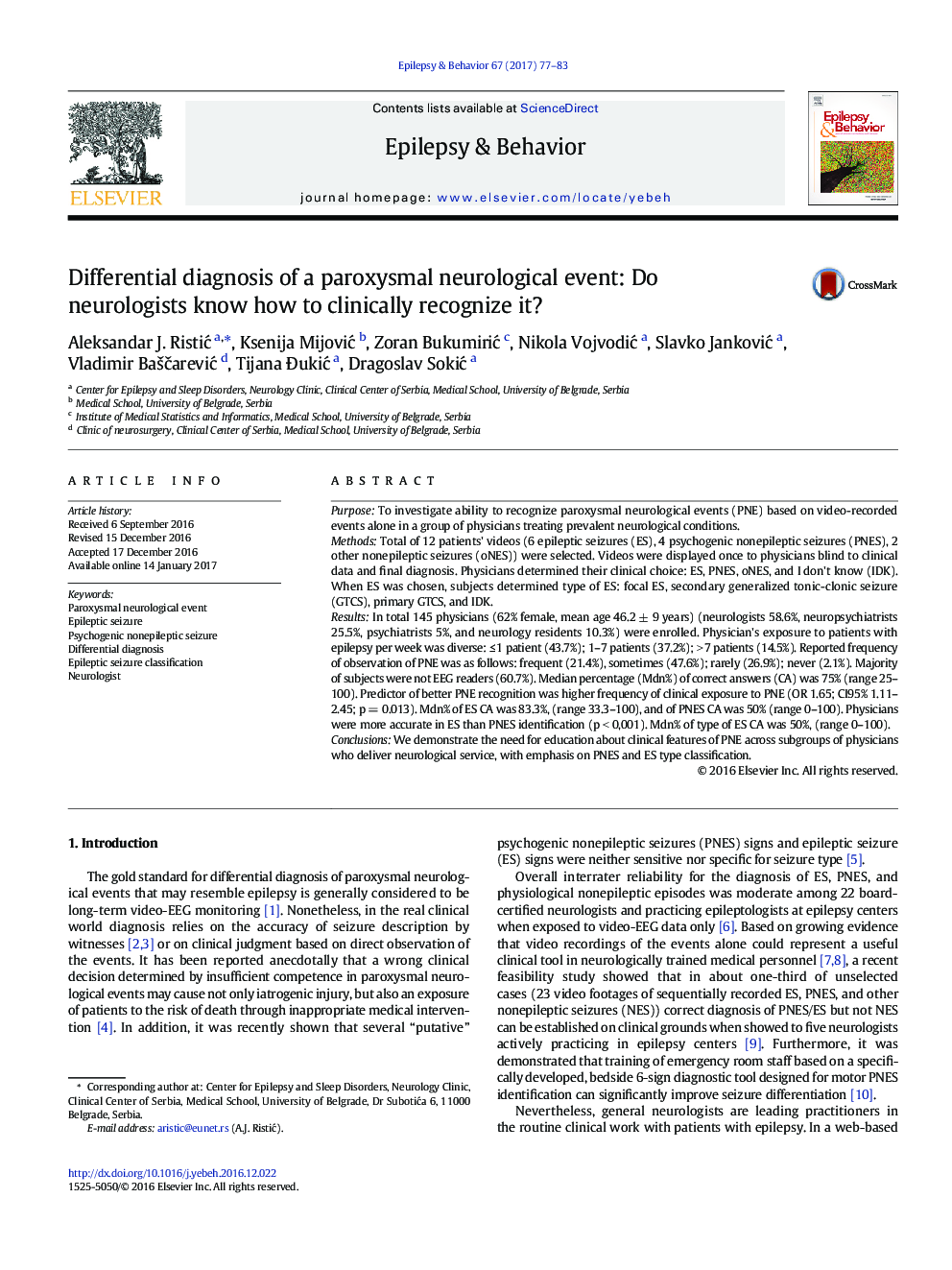| Article ID | Journal | Published Year | Pages | File Type |
|---|---|---|---|---|
| 5628474 | Epilepsy & Behavior | 2017 | 7 Pages |
â¢Neurologists show competence to correctly identify paroxysmal neurological events.â¢Neurologists label epileptic seizures better than psychogenic nonepileptic seizures.â¢Reliable rating on video alone is based on main clinical features and not subtle signs.
PurposeTo investigate ability to recognize paroxysmal neurological events (PNE) based on video-recorded events alone in a group of physicians treating prevalent neurological conditions.MethodsTotal of 12 patients' videos (6 epileptic seizures (ES), 4 psychogenic nonepileptic seizures (PNES), 2 other nonepileptic seizures (oNES)) were selected. Videos were displayed once to physicians blind to clinical data and final diagnosis. Physicians determined their clinical choice: ES, PNES, oNES, and I don't know (IDK). When ES was chosen, subjects determined type of ES: focal ES, secondary generalized tonic-clonic seizure (GTCS), primary GTCS, and IDK.ResultsIn total 145 physicians (62% female, mean age 46.2 ± 9 years) (neurologists 58.6%, neuropsychiatrists 25.5%, psychiatrists 5%, and neurology residents 10.3%) were enrolled. Physician's exposure to patients with epilepsy per week was diverse: â¤Â 1 patient (43.7%); 1-7 patients (37.2%); > 7 patients (14.5%). Reported frequency of observation of PNE was as follows: frequent (21.4%), sometimes (47.6%); rarely (26.9%); never (2.1%). Majority of subjects were not EEG readers (60.7%). Median percentage (Mdn%) of correct answers (CA) was 75% (range 25-100). Predictor of better PNE recognition was higher frequency of clinical exposure to PNE (OR 1.65; CI95% 1.11-2.45; p = 0.013). Mdn% of ES CA was 83.3%, (range 33.3-100), and of PNES CA was 50% (range 0-100). Physicians were more accurate in ES than PNES identification (p < 0,001). Mdn% of type of ES CA was 50%, (range 0-100).ConclusionsWe demonstrate the need for education about clinical features of PNE across subgroups of physicians who deliver neurological service, with emphasis on PNES and ES type classification.
